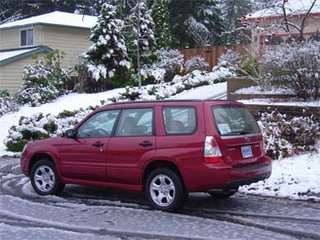In my
first Italy post, I mentioned a lot of the places we visited and the sights we saw. In this one, I thought I’d highlight the, well, highlights of the places we visited.
No visit – certainly no first visit – to Italy would be complete without spending at least some time amongst great art and amazing antiquities. This trip was no exception, but we also saw some wonderful modern art and beautiful countryside that was at least a match.
The highlights of Rome were the powerful statue of Moses by Michelangelo, tucked away in the
San Pietro in Vincoli, quite near our hotel, actually. I remember seeing slides of this statue in my seventh grade Art Appreciation class. (That class was one of the great awakenings of my young life. I still remember portions of it vividly.) It made it on our list because my sister-in-law had insisted to my wife to not miss it.
San Pietro in Vaticano was stunning, enormous, and oddly soaring and oppressive at the same time. Walking back from San Pietro, we passed by the
Pantheon, which is more beautiful for its antiquity and simplicity. For a thousand years, it was the largest dome in western Europe. My biggest delight of that day of delights, though, was the
Trevi Fountain. As you approach, you begin to hear the rush of the water and then, you enter the square and you’re there, with this Baroque wonder.
We spent the following few days staying in Montepulciano and touring the hill towns of Tuscano and Umbria. That topography was one of the highlights of the trip. Long, misty vistas, dramatic, cloudy skies, and charming, walled towns perched on all of the highest hilltops. The façade (and interior) of the
Duomo in Orvieto was stunning. We arrived in late afternoon and the lowering sun struck the face directly, absolutely lighting up the gold and white of the decoration. Inside is another delight – one of the chapels is decorated by amazing
frescos depicting the Apocalypse. Meanwhile, a small gang of kids was playing soccer against the white and black stripped side walls.
Besides the views of the city from the town of Fiesole to the northeast and the Giardino Boboli to the south, the highlights of Firenze were in the museums. The
Galleria degli Uffizi was too big for the time we had allowed for it, but we saw some wonderful paintings in a beautiful building, which has been an amazing museum for centuries. But the best for me was the Botticellis, with the prize going to his
The Birth of Venus, which is the most beautiful painting I’ve ever seen. Later that afternoon, we visited the
Galleria dell'Accademia nearby, where the star, by far, is Michelangelo’s
David. It is amazingly impressive, if only because it is so much larger than I had supposed. I must have circled it a half-a-dozen times.
The next segment took us to Liguria and we spent two days on trips to the coast. My favorite element of that were the Ligurian Sea and the dramatic rocks and cliffs of the
coastline. The water was clear and blue and warm. The cliffs plunged into the sea, with only a few pockets of beach, around which the little towns were clustered and sometimes
piled. That and the wonderful seafood.
Venezia itself was a highlight. For all of the antiquity that we’d seen in Italy and for all that Venezia contains, the
Peggy Guggenheim Collection came as a refreshing surprise. Jumping five centuries in art can be a shocking experience (I remember skipping from the seventeen century to the nineteenth in the Louve and being struck, for a time, until my eyes adjusted, by the thought that those crazy Impressionists couldn’t paint.) but it came as a revelation to me. The collection is awesome. Nearly every early twentieth century artist I’ve heard of was represented there, including Pollack’s stunning
Alchemy. There were also amazing works by Calder, Chagall, De Kooning, Duchamp, Ernst, Giacometti, Klee, Magritte, Mondrian, Moore, Motherwell, Picasso, Rothko and a bunch more I hadn’t heard of. As for buildings, the
Palazzo Ducale was amazing, a huge house for and monument to the power of Venezia.
Still want to go back.
